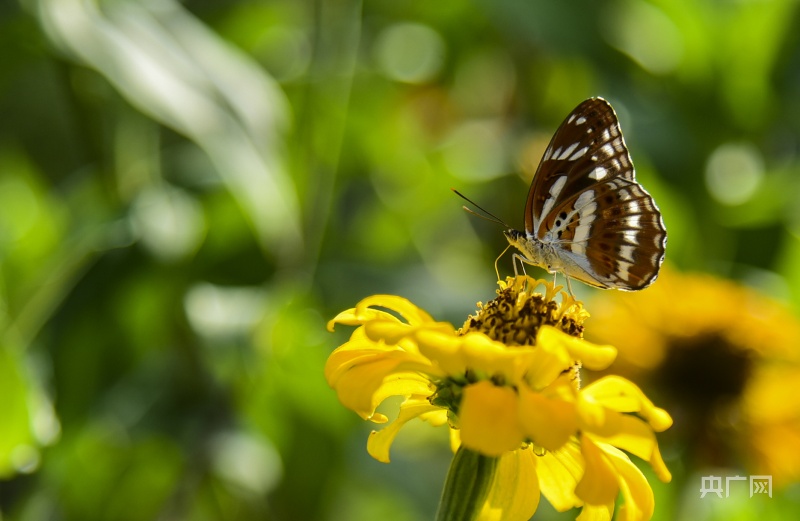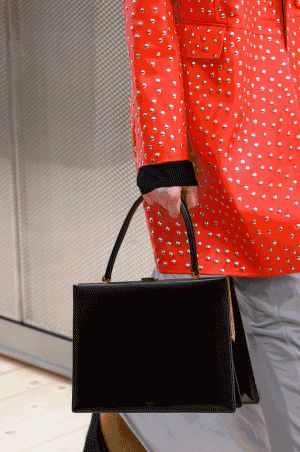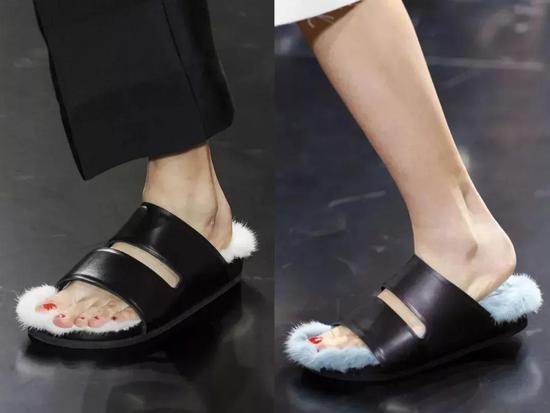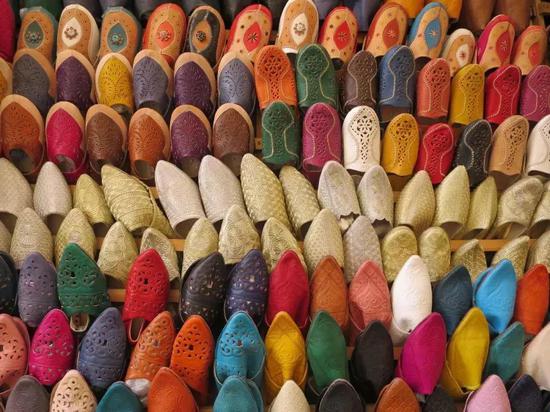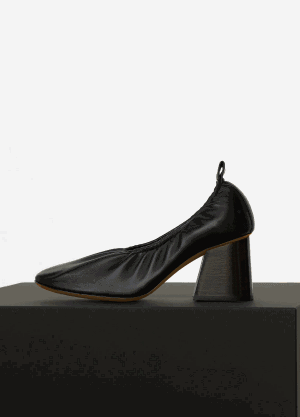Changsha IFS joins hands with Xingcheng to perceive the infinite cycle of art.
On May 15th, 2022, the opening ceremony of METALOOP, Changsha’s first large-scale public art project, was successfully launched in Changsha IFS, further highlighting the city card of Changsha as the world’s new media art capital, and refreshing the public’s common understanding of media art once again.
At the opening ceremony, Guo Runkui, deputy director of the Propaganda Department of Changsha Municipal Committee, secretary and director of the Party Committee of Changsha Municipal Bureau of Culture, Tourism, Radio, Film and Television, and representatives of eight joint units were invited to the scene to witness the launch of Changsha’s first large-scale public art project. On the day of the ceremony, the Art and Technology Summit Forum of "Society, Technology and Art in the Meta-Universe Era" was launched simultaneously. Dong Bingfeng, the artistic director and curator of METALOOP "Mixing" project, and six artists and scholars from the art, academic, science and technology industries all over the country conducted cross-border talks between contemporary art and public space.
Dialogue with Urban Symbiosis | Changsha IFS explores new fields of art and technology
On May 15th, METALOOP, Changsha’s first large-scale public art project, was successfully launched in Changsha IFS, under the guidance of Changsha Municipal Bureau of Culture, Tourism, Radio and Television, sponsored by Changsha IFS and planned by KUStudio, and jointly sponsored by four local museums and cultural organizations and four well-known enterprises and technology companies. Guo Runkui, deputy director of the Propaganda Department of Changsha Municipal Committee, secretary of the Party Committee and director of Changsha Municipal Bureau of Culture, Tourism, Radio, Film and Television, was invited to attend and delivered a speech, saying: "This 2022 Changsha Public Art Plan, through the most active and cutting-edge forms of art at present, discussed issues such as technological change and artistic practice in the era of the meta-universe, and promoted the city to implement the strategy of accelerating digital development and building a digital China, and the sustainable and all-round development of scientific and technological innovation. Show the world an international new aesthetic city image of culture, art and technology. Dong Bingfeng, artistic director and curator of METALOOP "Mixing" project, also sent congratulations on the online form and wished the ceremony a complete success. At the same time, Idy Tsang, Director of Promotion and Marketing Department of Changsha IFS, ying wang, Director of Service and Outreach of Changsha IFS Sub-tenant, and METALOOP "mixed".Project planner Peng Xinxin, co-founder and general manager of Xidi Zhijia Ma Wei, National Hybrid Rice Engineering Technology Research Center and Deputy Director of Hunan Hybrid Rice Research Center Office Rowling, Director of Changsha Museum Information Center Pu Yinghui, Deputy Director of Changsha Intangible Cultural Heritage Protection Center Zhu Peng, Deputy Director of Public Service Department of Longping Rice Museum Zhang Jingyi, Executive Director of Xie Zilong Image Art Museum Lu Ni, Zhang Xianming, vice president of Yuanda Technology Group and general manager of Yuanda Core Digital Technology Co., Ltd., Huang Liting, founder of P8 Planet, and Tang AirAsia, administrative assistant manager of Niygelo Hotel in Changsha, came to the scene to present their prospects and expectations for this art project.
Dialogue Art Integration | Changsha IFS opens a new mode of commercial public space
Changsha public art project METALOOP "mixing" is a dialogue between art and the city, but also between art and the public. In this art project, Changsha IFS invited 2 groups of well-known curators and 11 groups of domestic and international artists and groups to exhibit 3 groups of art projects, bringing art into commercial space and creating a multi-dimensional shopping experience for consumers. After the opening ceremony, the professional guided tour of the specially invited commentator on the spot further narrowed the distance between the public and art, and deeply felt the story and charm behind the works of art.
West atrium of Changsha IFS LG2: Hu Jieming-the world’s first exhibition of large-scale public image installation "Image Palace"
Hu Jieming is one of the pioneer artists of digital media and video devices in China. His artistic creation stops at the alternation of time, space-time, history and memory, which puts the public in an uncertain time and space in the past, thus arousing personal memory. Inspired by 5,000 images of Changsha’s real scenes, cityscape and daily life, the artist Hu Jieming created a large-scale public image installation "Image Palace", which is the world’s exclusive combination of virtual and reality. This is the largest image installation creation by Hu Jieming in the past five years. The new media sound and painting installation in the center of the palace was created by Edward Xu, which dynamically showed the temporal and spatial characteristics of Changsha’s ancient and modern changes, which is undoubtedly the best integration of local humanistic characteristics and modern high technology. During the tour, the public gradually discovered the familiar image of Changsha city, which triggered a heated discussion about the city memory.
Outside the imaging device, an artificial intelligence driving experience game — The "Meta-Mine" intelligent cockpit has attracted great attention from the public and participated in the experience. Through the precise digital creation of "Image Palace", the game imitates the actual scene of Sidi’s intelligent driving in the mine to the greatest extent and cooperates with the automatic driving algorithm based on artificial intelligence technology. In these two cockpits, the public can travel through the image time and space through "driving games", control the self-driving mine card model to shuttle and mine in the virtual digital art installation, observe the Image Palace from different angles, and experience the local culture of the city.
Changsha IFS Full Electronic Screen: SHIMMER- LED Big Screen International New Media Art Exhibition "Endless Dreams"
Exhibition time: during the exhibition period
10: 00/12: 00/14: 00/16: 00/18: 00/20: 00 for 20 minutes.
The public video art exhibition "Endless Dreams" will be displayed in Changsha IFS Southwest Square, Northwest Square, Huangxing Road, L5 West Atrium and L7 Sculpture Garden by using the most forward-looking public LED electronic screen exhibition method. Disnovation.org (France), Joey Holder (UK), Saemundur Thor Helgason (Iceland), Kim Laughton (UK), nabbteeri (Finland), Lu Minglong (UK), Shi Ruini, Wang Jingxin and Xinyi Wang are nine groups of well-known domestic and international artists and groups. Presented in three story chapters: the dream of farmers, the dream of artists and the dream of drivers, the relationship among human beings, machines and sociality is re-conceived in a poetic way, which responds to the transformation towards the post-human era. At the tour site, the public took the lead in viewing three groups of works of art by Changsha IFS L5, and stopped to watch this new exhibition mode and expressed strong interest.
Changsha IFS L7 Art Gallery: Lu Yang-Pioneer Artists’ New Works in Global Exhibition DOKU:HELLO WORLD
Lu Yang, one of the artists participating in the theme exhibition of the 59th Venice Biennale in 2022, is also the winner of the 2022 "Artist of the Year" published by Deutsche Bank, and this time introduces his latest multimedia works.DOKU:HELLO WORLDDebut at Changsha IFS. Born for love and peace, DOKU is an inspiration creator who integrates multi-culture and spans art categories. Through guided tours, the public can see the integration of dynamic capture and 3D scanning technology, dance and music art in DOKU, and feel the infinite possibilities of artistic creation in the digital age together.
Dialogue with "Metauniverse" Urban Forum | Changsha IFS opens a new prospect of digital art
On the afternoon of May 15th, the Art and Technology Summit Forum on "Society, Technology and Art in the Metauniverse Era" was held across the border. The forum was divided into two parts: round-table dialogue and cross-border dialogue, and was hosted by Dong Bingfeng, artistic director and curator of the METALOOP "Mixing" project of Changsha Public Art Plan. Keynote speech invited to Beijing? Hu Yong, Professor of School of Journalism and Communication, Nanjing? Lan Jiang, a professor of philosophy, and Huang Sunquan, a professor of China Academy of Fine Arts, gave a professional interpretation of "Society, Technology and Art in the Meta-Universe Era". The round-table dialogue invited Lu Ni, executive director of Xie Zilong Image Art Museum, Ma Wei, co-founder and general manager of Xidi Zhijia, and Hu Jieming, an exhibiting artist, to have a tripartite cross-border dialogue.
Keynote speech: "This may be the first time in this century, and we may invent a brand-new aesthetics. That is to restart the imagination and invent new aesthetics. But to realize this expectation, someone must take the reins from the technical experts. "
Keynote speech: "Things in the metauniverse are not passive, but can participate in the existence of the subject of the metauniverse to a certain extent. In this sense, the imitation law between people will inevitably expand to the imitation law between things."
Keynote speech: "The metauniverse may not be very advanced in technology in the past decade, but it provides infinite imagination and possibilities. We should find ways to regenerate ourselves from our own life experiences and those gaps."
Roundtable dialogue: "Art is personal and shared. Each of us is a small universe, and art fills the aesthetics of the public everywhere. "
Roundtable dialogue: "Yuankuang is a sub-brand of Xidi Zhijia in the field of mine automatic driving. The goal is to build a mine operation mode with equipment intelligence and online remote cooperation similar to Metauniverse based on technologies such as automatic driving, artificial intelligence, Metauniverse and 5G."
Roundtable dialogue: "Space is the place where we live. The spatial dimensions we face are multiple, and we can change space, expand space and create space. "
At the Art and Technology Summit Forum of "Society, Technology and Art in the Meta-Universe Era", seven guests tried to explore the more possibilities of "we" for technological innovation, artistic innovation and space sharing from the concept of "Meta-Universe" in many fields such as society, science, art and public space.
Dialogue with Underground Kilometers | Limiting the Courtesy of High-end Minerals and Perceiving the Beauty of "Treasures"
Changsha IFS and Xidi Zhijia started cross-border cooperation to mine rich ores with the highest metal content in China, and customized exclusive ore certificates and digital certificates. Each ore has a unique corresponding number in the world, creating a limited number of high-end ore courtesy.
Breaking, Awakening and Rebuilding | Building a Public Art Platform with Changsha as the Subject
On November 1, 2017, UNESCO released the list of global "Creative City Networks" in Paris, and Changsha was selected as the "Media Art Capital" in the world, becoming the first China city to receive this honor. Changsha has thus entered an important stage of brand-new cultural industry innovation and development. In the future, Changsha will implement the 14th Five-Year Plan and the strategy of "Three Highs and Four Innovations", implement the plan of "accelerating digital development and building a digital China" and the strategy of scientific and technological innovation, sustainable and all-round development, deepen the image of "World Media and Art Capital", and show the world an international new aesthetic city with taste, style, connotation, temperament and value, and an international artistic and cultural innovation city.
If the most important presentation space of traditional art is the museum, then today, with the rapid development of globalization, more and more urban public spaces and cultural and commercial complexes are actively promoting and constructing "art — The benign interaction of public relations and an open network of future thought experiments. Undoubtedly, Changsha IFS initiated the "2022 Changsha Public Art Plan METALOOP‘ Mix ’ " For Changsha and its surrounding areas, an important case of promoting the development and renewal of urban culture with artistic creativity is being established.
More activity information
About 2022 Changsha Public Art Plan METALOOP "Mixing"
-Changsha IFS
Exhibition: Image Palace
DOKU:HELLO WORLD
Unremitting dreams
Time: from now until June 30th, 2022.
Opening hours: 10: 00 & ndash; ten o’clock pm
Address: No.188 Jiefang West Road, Furong District, Changsha, Hunan.
-Niygro Hotel Changsha
Exhibition: "Modern Lighthouse" Shenglong City Image Exhibition
Time: from now until June 20th, 2022.
Opening hours: open all day.
Exhibition: Cloud Painting Appreciation? Dream in a Dream "Fang Shibiao Sky Suite Art Space"
Time: from April 22nd, 2022.
Opening hours: 10: 00 & ndash; six o’clock pm
Address: Changsha IFS T1, No.188 Jiefang West Road, Furong District, Changsha, Hunan Province
- Yuanda Xinjian digital technology
Exhibition: 70 Island /70 DAO
Time: permanent exhibition throughout the year (the exhibition content is updated regularly)
Opening hours: 08: 00 every Monday to Friday & ndash; six o’clock pm
Address: Yuanda City, No.3 Yuanda Road, Changsha County, Changsha, Hunan Province
- changsha museum
Exhibition: "Xiang Jiang Bei Qu — Changsha Ancient History and Culture Exhibition "
Time: permanent exhibition throughout the year
Opening hours: 09: 00 every Tuesday to Sunday & ndash; five o’clock pm
Address: Southwest of the intersection of Xiangjiang North Road and Qifeng Road, Kaifu District, Changsha, Hunan (Changsha Binjiang Cultural Park)
- Changsha intangible cultural heritage museum
Exhibition: Xiang SHOW— Xiangxiu Life Aesthetics Exhibition "
Time: from now until June 20th, 2022.
Opening hours: every Tuesday to Sunday at 09: 30 & ndash; five o’clock pm
Address: Juzizhou Scenic Management Zone, Yuelu District, Changsha City, Hunan Province (formerly Juzhou Inn)
-Sidi Zhijia
Exhibition: "Hideki Driving Exhibition"
Time: permanent exhibition throughout the year
Opening hours: every Monday to Friday from 10: 00 to 18: 00.
Address: A3-A4, Hunan Inspection and Testing Characteristic Industrial Park, No.336 Xueshi Road, Yuelu District, Changsha, Hunan.
- Longping rice museum
Exhibition: Permanent Exhibition of Rice Culture 2022
Time: permanent exhibition throughout the year
Opening hours: 09: 00 & ndash; five o’clock pm
Address: Renmin East Road, Furong District, Changsha, Hunan
- P8 planet
Exhibition: Soft Space-A Unit Exhibition of the Curator Plan Phase I
Time: June 4-July 31, 2022
Opening hours: every Thursday to Sunday at 10: 00 & ndash; six o’clock pm
Address: P8 Planet, Yuanda City, No.1 Yuanda Third Road, Changsha County, Changsha City, Hunan Province
About Changsha IFS interactive experience
-The Founding Fathers of the Arts Light up the Medal for Redemption.
Time: April 30-June 30, 2022
Combine the function of Changsha IFS small program medal, start the Art Founders program, and there are many surprises and gifts waiting for you to discover.
Top wave player medal — Scan the code in the LG2 "Meta-Mine" intelligent cockpit and participate in the "driving game" to light it up;
Frontier Art Coffee Medal — Scan the QR code of the Live Art Founders Project in L7 Art Gallery to light it up.
Art Pioneer Medal — Use indoor mixed real-life navigation iGO to find treasure in the interactive screen of LG2 "Image Palace", L7 Art Gallery and L7 Sculpture Garden.










